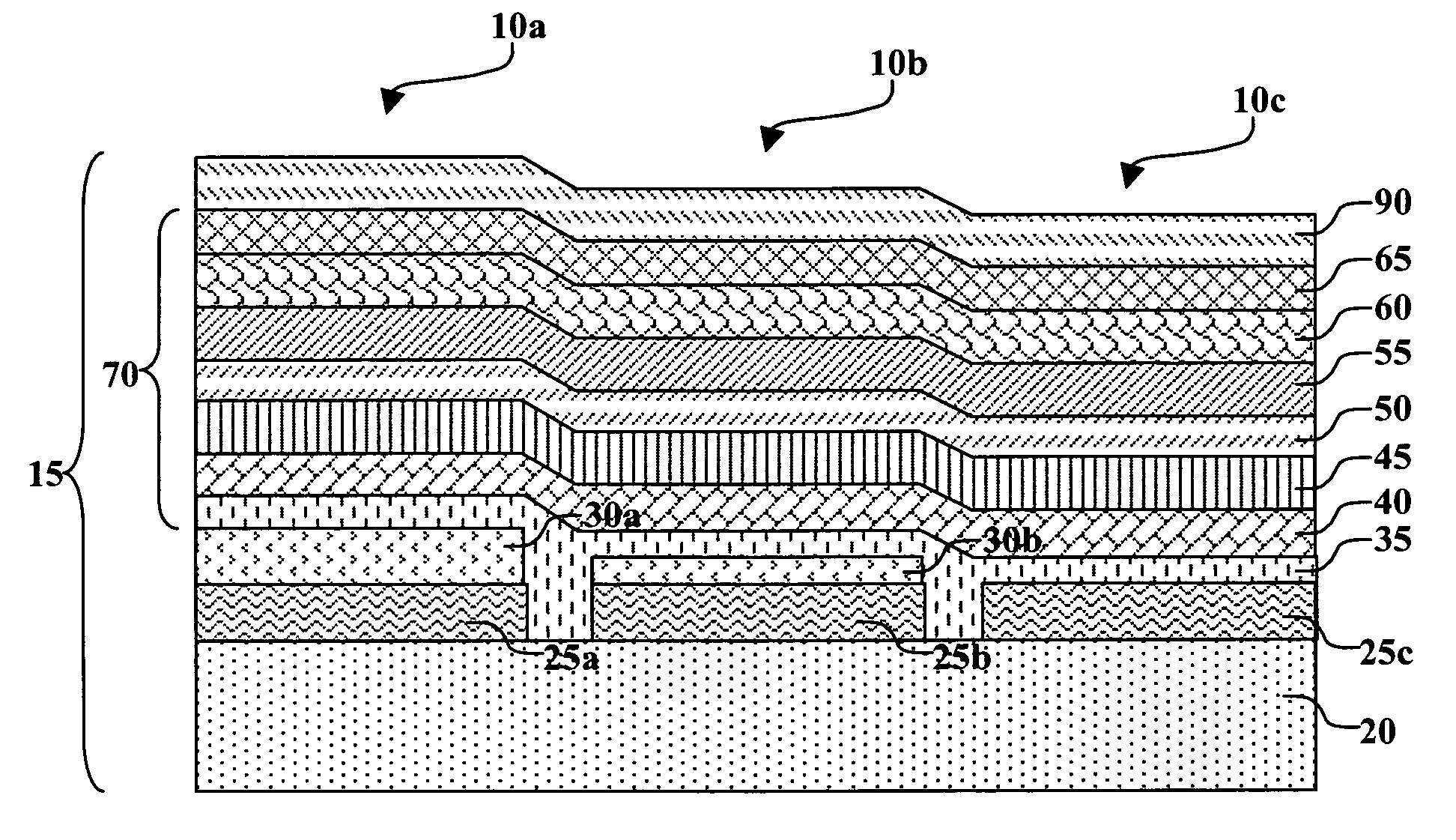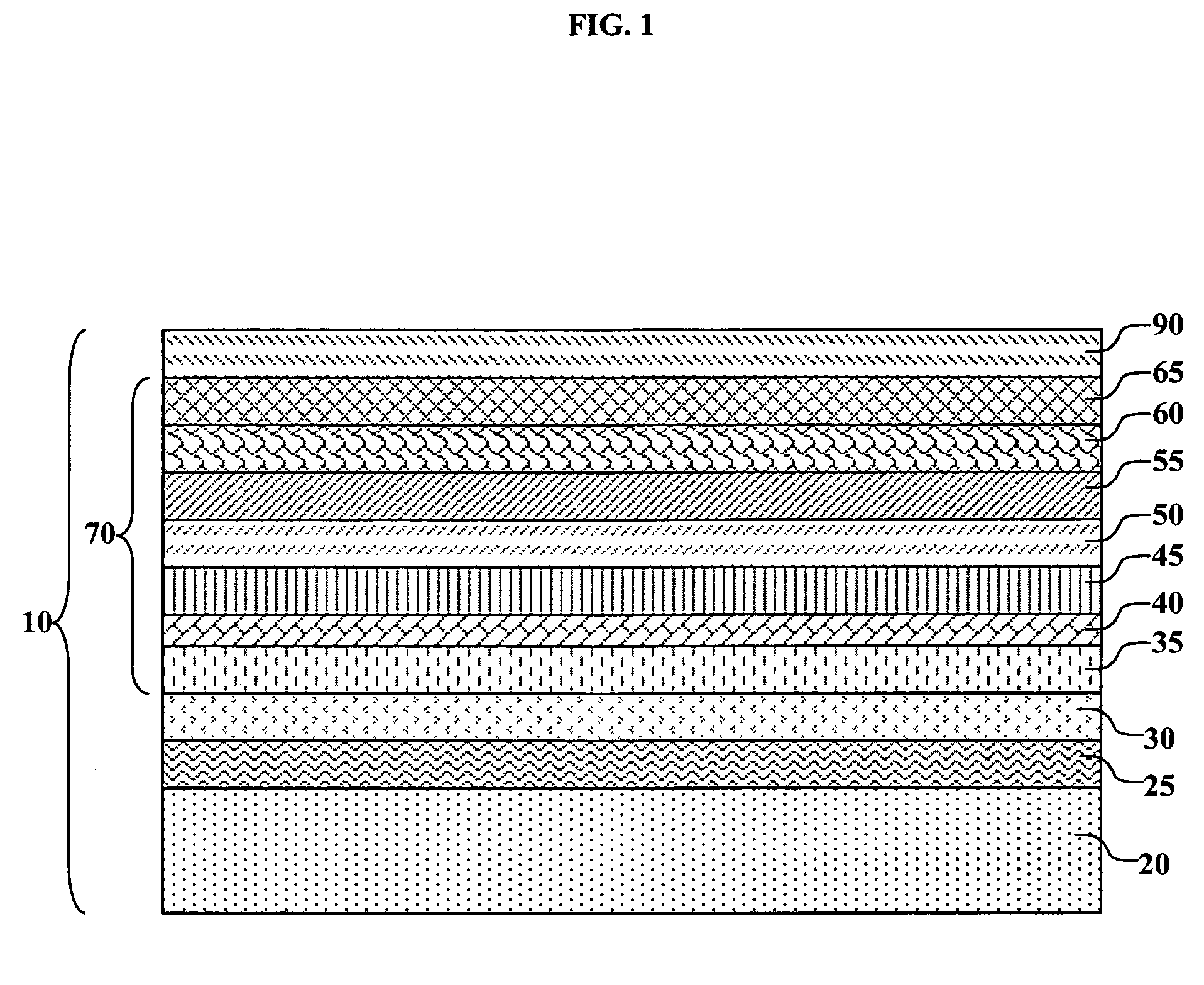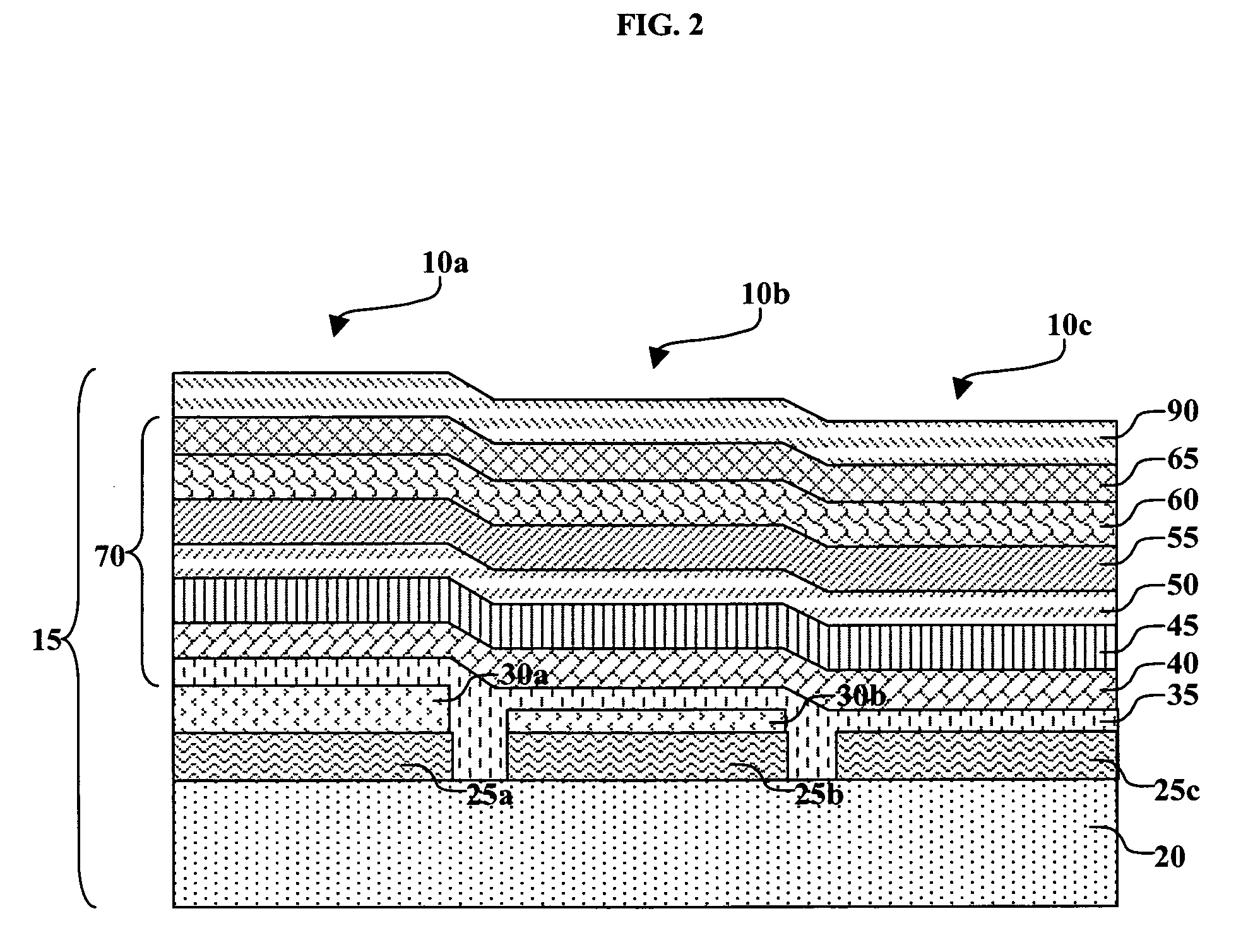Tuned microcavity color OLED display
a color oled display and microcavity technology, applied in the direction of discharge tube luminescnet screens, instruments, natural mineral layered products, etc., can solve the problems of reducing the efficiency of light providing, reducing the intensity of one or more of the red, green and blue components of the emission spectrum, and improving the power consumption relative to an rgb device constructed of similar materials, etc., to achieve better color gamut, less color distortion, and color consistency. good
- Summary
- Abstract
- Description
- Claims
- Application Information
AI Technical Summary
Benefits of technology
Problems solved by technology
Method used
Image
Examples
example 2 (
INVENTIVE)
[0201] An inventive color OLED display was constructed in the following manner: [0202] 1. A clean glass substrate was deposited by sputtering with indium tin oxide (ITO) to form a transparent electrode of 85 nm thickness; [0203] 2. The above-prepared ITO surface was treated with a plasma oxygen etch, followed by plasma deposition of a 0.1 nm layer of a fluorocarbon polymer (CFx) as described in U.S. Pat. No. 6,208,075; [0204] 3. The above-prepared substrate was further treated by vacuum-depositing a 240 nm layer of NPB as a hole-transporting layer (HTL); [0205] 4. A 28 nm layer of 20 nm NPB and 8 nm rubrene containing 0.5% TPDPB (above) was vacuum-deposited onto the substrate at a coating station that included a heated graphite boat source to form a red light-emitting layer (red LEL); [0206] 5. A coating of 20 nm of 2-tert-butyl-9,10-bis(2-naphthyl)anthracene (TBADN) with 1 nm NPB and 0.75% BEP (above) was evaporatively deposited on the above substrate to form a blue-light...
example 3 (
INVENTIVE)
[0210] An inventive color OLED display was constructed in the manner described in Example 2, except the following steps were changed: [0211] 4. A 27 nm layer of 20 nm NPB and 7 nm rubrene containing 0.5% TPDPB (above) was vacuum-deposited onto the substrate at a coating station that included a heated graphite boat source to form a red light-emitting layer (red LEL); [0212] 5. A coating of 40 nm of TBADN with 0.5% DPQA was evaporatively deposited on the above substrate to form a green-light-emitting layer (green LEL); [0213] 6. A coating of 20 nm of TBADN with 1 nm NPB and 0.75% BEP was evaporatively deposited on the above substrate to form a blue-light-emitting layer (blue LEL); and [0214] 7. A 20 nm electron-transporting layer (ETL) of ALQ was vacuum-deposited onto the substrate at a coating station that included a heated graphite boat source.
example 4 (
INVENTIVE)
[0215] An inventive color OLED display was constructed in the manner described in Example 2, except that the following steps were changed: [0216] 3. The above-prepared substrate was further treated by vacuum-depositing a 120 nm layer of NPB as a hole-transporting layer (HTL); [0217] 4. A 27 nm layer of 20 nm NPB and 7 nm rubrene containing 0.5% TPDPB (above) was vacuum-deposited onto the substrate at a coating station that included a heated graphite boat source to form a red light-emitting layer (red LEL); [0218] 5. A coating of 10 nm of TBADN and 10 nm ALQ with 0.5% DPQA was evaporatively deposited on the above substrate to form a green-light-emitting layer (green LEL); [0219] 6. A coating of 20 nm of TBADN with 1 nm NPB and 0.75% BEP was evaporatively deposited on the above substrate to form a blue-light-emitting layer (blue LEL); and [0220] 7. A 20 nm electron-transporting layer (ETL) of ALQ was vacuum-deposited onto the substrate at a coating station that included a he...
PUM
| Property | Measurement | Unit |
|---|---|---|
| Width | aaaaa | aaaaa |
| Width | aaaaa | aaaaa |
| Width | aaaaa | aaaaa |
Abstract
Description
Claims
Application Information
 Login to View More
Login to View More - R&D
- Intellectual Property
- Life Sciences
- Materials
- Tech Scout
- Unparalleled Data Quality
- Higher Quality Content
- 60% Fewer Hallucinations
Browse by: Latest US Patents, China's latest patents, Technical Efficacy Thesaurus, Application Domain, Technology Topic, Popular Technical Reports.
© 2025 PatSnap. All rights reserved.Legal|Privacy policy|Modern Slavery Act Transparency Statement|Sitemap|About US| Contact US: help@patsnap.com



